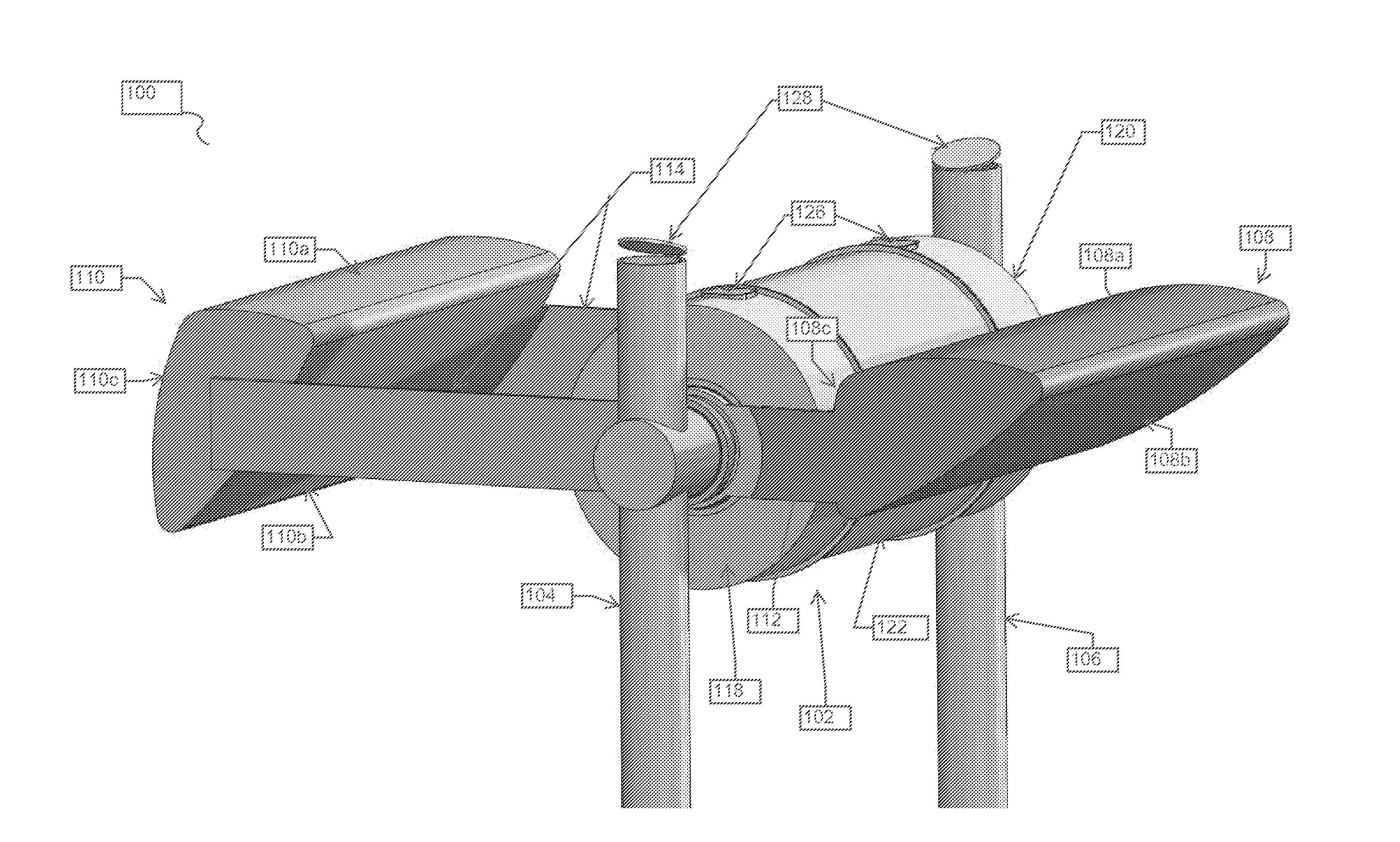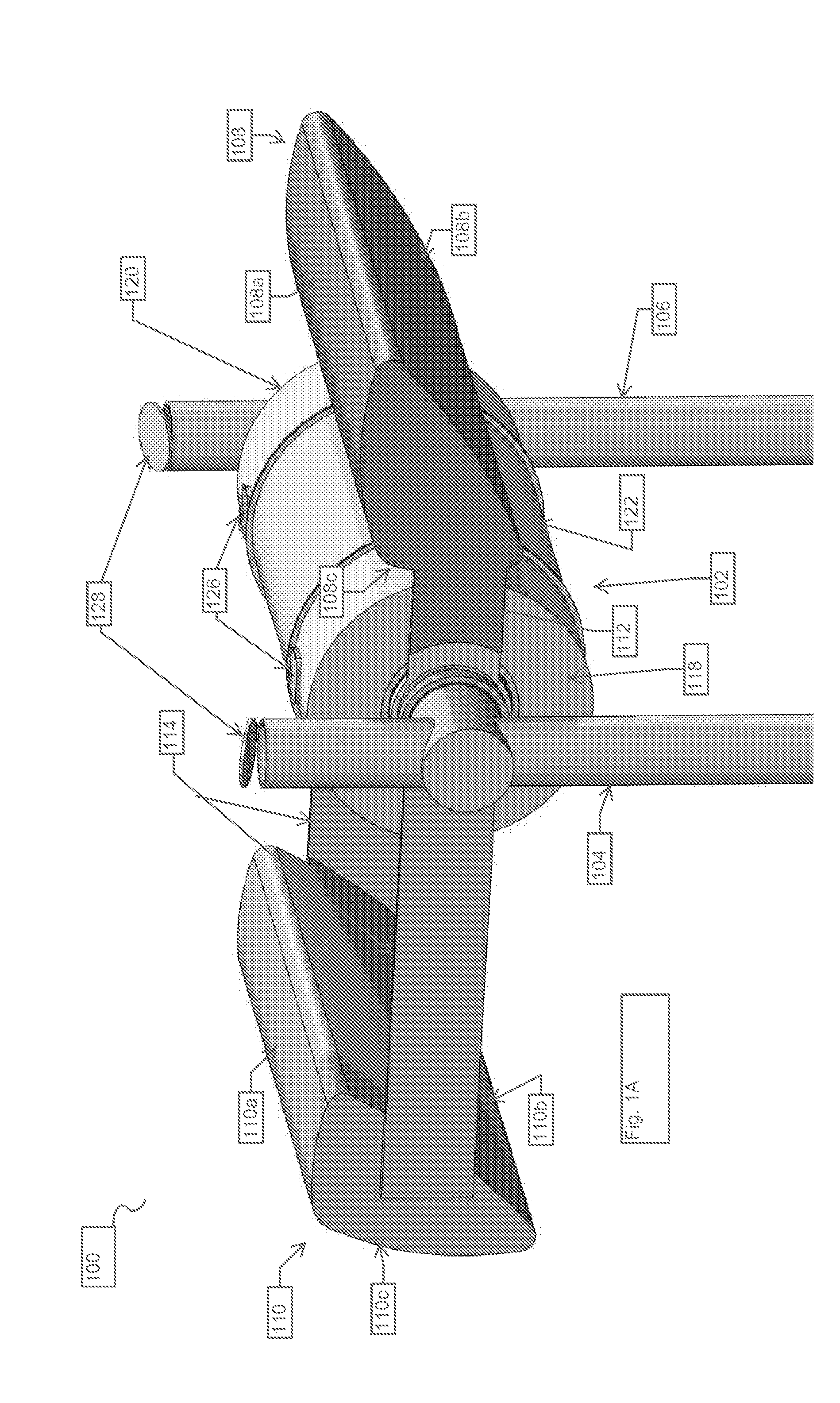Method and system for wave energy conversion
- Summary
- Abstract
- Description
- Claims
- Application Information
AI Technical Summary
Benefits of technology
Problems solved by technology
Method used
Image
Examples
Embodiment Construction
[0032]The technology of the present disclosure relates to a wave energy converter (WEC) useful for transforming the energy associated with the heave and surge of offshore swells and storm waves into rotational power. Turning now to FIGS. 1A-G, the WEC 100 comprises a buoyant nacelle 102 having a central longitudinal axis, a first spar 104, a second spar 106, a first float 108 operatively coupled (e.g., by first float drive arms 112) to a power take off (PTO) and a second float 110 operatively coupled (e.g., by second float drive arms 114) to a power take off (e.g., the first power take off or a second power take off). In some embodiments the WEC 100 may also include a hydrodynamic control system 116 (HCS).
[0033]In some embodiments, the nacelle 102 may be described as a substantially watertight housing within which may be housed one or more rotary-driven power take offs. In other embodiments the nacelle may be described as two or more (e.g., three as shown) connected, substantially w...
PUM
 Login to View More
Login to View More Abstract
Description
Claims
Application Information
 Login to View More
Login to View More - R&D Engineer
- R&D Manager
- IP Professional
- Industry Leading Data Capabilities
- Powerful AI technology
- Patent DNA Extraction
Browse by: Latest US Patents, China's latest patents, Technical Efficacy Thesaurus, Application Domain, Technology Topic, Popular Technical Reports.
© 2024 PatSnap. All rights reserved.Legal|Privacy policy|Modern Slavery Act Transparency Statement|Sitemap|About US| Contact US: help@patsnap.com










